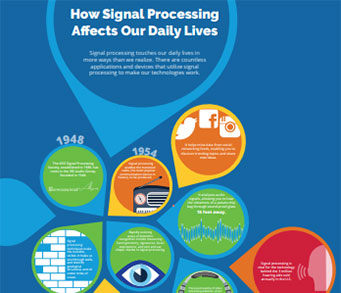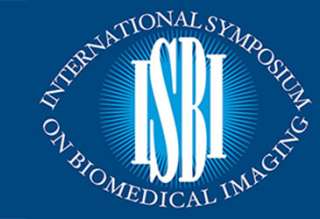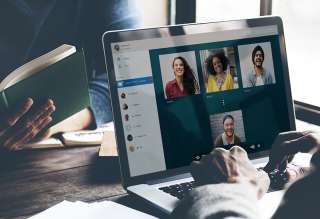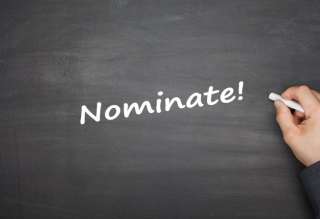- Our Story
- Publications & Resources
- Publications & Resources
- Publications
- IEEE Signal Processing Magazine
- IEEE Journal of Selected Topics in Signal Processing
- IEEE Signal Processing Letters
- IEEE Transactions on Computational Imaging
- IEEE Transactions on Image Processing
- IEEE Transactions on Information Forensics and Security
- IEEE Transactions on Multimedia
- IEEE Transactions on Signal and Information Processing over Networks
- IEEE Transactions on Signal Processing
- IEEE TCI
- IEEE TSIPN
- Data & Challenges
- Submit Manuscript
- Guidelines
- Information for Authors
- Special Issue Deadlines
- Overview Articles
- Top Accessed Articles
- SPS Newsletter
- SigPort
- SPS Resource Center
- Publications FAQ
- Blog
- News
- Dataset Papers
- Conferences & Events
- Community & Involvement
- Professional Development
- For Volunteers
- Information for Authors-OJSP
-
Home
Conferences Events IEEE Signal Processing Magazine IEEE SPL Article IEEE TIFS Article IEEE TMM Article IEEE TSP Article Jobs in Signal Processing Lectures Machine Learning Seasonal Schools Signal Processing News SPM Article SPS Distinguished Lectures SPS Newsletter Article SPS Webinar SPS Webinars SPS Webinar Series Webinar webinars
-
Our Story
What is Signal Processing?

The technology we use, and even rely on, in our everyday lives –computers, radios, video, cell phones – is enabled by signal processing. Learn More » -
Publications & Resources
-
SPS Resources
- Signal Processing Magazine The premier publication of the society.
- SPS Newsletter Monthly updates in Signal Processing
- SPS Resource Center Online library of tutorials, lectures, and presentations.
- SigPort Online repository for reports, papers, and more.
- SPS Feed The latest news, events, and more from the world of Signal Processing.
-
SPS Resources
-
Conferences & Events
-
Community & Involvement
-
Membership
- Join SPS The IEEE Signal Processing Magazine, Conference, Discounts, Awards, Collaborations, and more!
- Chapter Locator Find your local chapter and connect with fellow industry professionals, academics and students
- Women in Signal Processing Networking and engagement opportunities for women across signal processing disciplines
- Students Scholarships, conference discounts, travel grants, SP Cup, VIP Cup, 5-MICC
- Young Professionals Career development opportunities, networking
- Get Involved
-
Technical Committees
- Applied Signal Processing Systems
- Audio and Acoustic Signal Processing
- Bio Imaging and Signal Processing
- Computational Imaging
- Image Video and Multidimensional Signal Processing
- Information Forensics and Security
- Machine Learning for Signal Processing
- Multimedia Signal Processing
- Sensor Array and Multichannel
- Signal Processing for Communication and Networking
- Signal Processing Theory and Methods
- Speech and Language Processing
- Technical Working Groups
- More TC Resources
-
Membership
-
Professional Development
-
Professional Development
- Signal Processing Mentorship Academy (SigMA) Program
- Micro Mentoring Experience Program (MiME)
- Distinguished Lecturer Program
- Distinguished Lecturers
- Distinguished Lecturer Nominations
- Past Lecturers
- Distinguished Industry Speaker Program
- Distinguished Industry Speakers
- Distinguished Industry Speaker Nominations
- Industry Resources
- IEEE Training Materials
- Jobs in Signal Processing: IEEE Job Site
-
Career Resources
- SPS Education Program Educational content in signal processing and related fields.
- Distinguished Lecturer Program Chapters have access to educators and authors in the fields of Signal Processing
- Job Opportunities Signal Processing and Technical Committee specific job opportunities
- Job Submission Form Employers may submit opportunities in the area of Signal Processing.
-
Professional Development
-
For Volunteers
-
For Board & Committee Members
- Board Agenda/Minutes* Agendas, minutes and supporting documentation for Board and Committee Members
- SPS Directory* Directory of volunteers, society and division directory for Board and Committee Members.
- Membership Development Reports* Insight into the Society’s month-over-month and year-over-year growths and declines for Board and Committee Members
-
For Board & Committee Members
Popular Pages
Today's:
- Information for Authors
- Submit Your Papers for ICASSP 2026!
- (ICME 2026) 2026 IEEE International Conference on Multimedia and Expo
- IEEE Transactions on Information Forensics and Security
- IEEE Transactions on Multimedia
- Submit a Manuscript
- Membership
- IEEE Transactions on Image Processing
- Information for Authors-SPL
- (ICASSP 2026) 2026 IEEE International Conference on Acoustics, Speech, and Signal Processing
- IEEE Transactions on Signal Processing
- SPS Webinar: Presentation Attack Detection on ID Cards
- Call for Papers for ICASSP 2026 Now Open!
- Governance Documents
- SPS Webinar: An Anomaly Detection Framework with Compressed Transformer Architecture for Tiny ML
All time:
- Information for Authors
- Submit a Manuscript
- IEEE Transactions on Image Processing
- IEEE Transactions on Information Forensics and Security
- IEEE Transactions on Multimedia
- IEEE Transactions on Audio, Speech and Language Processing
- IEEE Signal Processing Letters
- IEEE Transactions on Signal Processing
- Conferences & Events
- IEEE Journal of Selected Topics in Signal Processing
- Information for Authors-SPL
- Conference Call for Papers
- Signal Processing 101
- IEEE Signal Processing Magazine
- Guidelines
Last viewed:
- IEEE Transactions on Information Forensics and Security
- Submit Your Papers for ICASSP 2026!
- (ICME 2026) 2026 IEEE International Conference on Multimedia and Expo
- Information for Authors
- IEEE Transactions on Multimedia
- Inside Signal Processing Newsletter
- Access Restricted
- SPS Webinar: Bilinear Expectation Propagation for Distributed Semi-Blind Joint Channel Estimation and Data Detection in Cell-Free Massive MIMO
- (ASRU 2025) 2025 IEEE Automatic Speech Recognition and Understanding Workshop
- IEEE Transactions on Signal Processing
- Call for Proposals: 2025 Cycle 2 Seasonal Schools & Member Driven Initiatives in Signal Processing
- Publications
- Call for Papers for ICASSP 2026 Now Open!
- ISAC-TWG Webinar: Fundamentals of Radio Imaging for ISAC: Methods, Synchronization and New Frontiers
- Information for Authors-SPL
Top Reasons to Join SPS Today!
1. IEEE Signal Processing Magazine
2. Signal Processing Digital Library*
3. Inside Signal Processing Newsletter
4. SPS Resource Center
5. Career advancement & recognition
6. Discounts on conferences and publications
7. Professional networking
8. Communities for students, young professionals, and women
9. Volunteer opportunities
10. Coming soon! PDH/CEU credits
Click here to learn more.
The Latest News, Articles, and Events in Signal Processing
Lecture Date: December 7, 2020 (Virtual Lecture)
Chapter: Beijing
Chapter Chair: Qiuqi Ruan
Topic: Binary optimizations in signal processing
Date: October 28, 2020
Time: 11:00 AM EDT (New York Time)
Title: Joint Optimization of Radio and Computational
Resources in Mobile Edge Computing
Registration | Full webinar details
In recent years, we have seen the emergence of new compute-intensive and delay-critical mobile applications, such as virtual/augmented reality, online gaming, ultra-high-definition video streaming and autonomous driving. Multi-access edge computing (MEC) has become a key technology in 5G networks to shift computational tasks from resource-limited mobile devices to nearby servers placed at the edge of the network.
White Paper Due: November 1, 2020
Publication Date: November 2021
CFP Document
White Paper Due: February 1, 2021
Publication Date: March 2022
CFP Document
Submission Deadline: February 19, 2021
Call for Proposals Document
This issue brings to you our interview with Dr. Ervin Sejdić, an Associate Professor at the Swanson School of Engineering, University of Pittsburgh, where he directs a research laboratory focused on engineering developments in medicine. His research has focused on creating computational biomarkers indicative of age- and disease-related changes in functional outcomes such as swallowing, gait, and handwriting.
IEEE SPS has built a streamlined mechanism for employers to add a job announcement by simply filling in a simple job opportunity submission Web form related to a particular TC field. To submit job announcements for a particular Technical Committee, the submission form can be found by visiting the page below and selecting a particular TC.
The IEEE Signal Processing Society (SPS) would like to express our concern and support for the members of our global community and all affected by the current COVID-19 pandemic.
Each month, the Chapter Briefs Newsletter will feature an OU Analytics Tip that will be helpful to all who utilize the OU Analytics tool. This month's Tip features obtaining Membership Verification.
Each month, the Chapter Briefs Newsletter will feature an OU Analytics Tip that will be helpful to all who utilize the OU Analytics tool. This month's Tip features obtaining Membership Verification.
The IEEE Signal Processing Society (SPS) is launching PROGRESS - an initiative aiming to motivate and support women and under-represented minorities to pursue academic careers in signal processing. 2020 PROGRESS Workshop at ICIP 2020 (Virtual), 26-27 October 2020. Submission Deadline is 20 October 2020!
The IEEE Signal Processing Society (SPS) has extended the nomination period for the position of the Chair, Young Professionals Committee in order to allow for a more diverse slate of candidates.
Dr. Mari Ostendorf is an Endowed Professor of System Design Methodologies at the University of Washington in the Electrical & Computer Engineering Department, currently serving as Associate Vice Provost for Research. She is also an Adjunct Professor in Linguistics and in the Paul G. Allen School of Computer Science and Engineering.
Vimal Bhatia is a Professor in the Discipline of Electrical Engineering at the Indian Institute of Technology Indore, India. He is also an associated faculty with Centre for Advanced Electronics and Discipline of Astronomy, Astrophysics, and Space Engineering at IIT Indore.

Position description: The research project will focus on developing machine learning/deep learning methods for fundamental computer vision problems including object motion tracking, segmentation, 3D reconstruction, classification and image captioning in 2D/3D images including RGBD images, remote sensing data, 3D CT/MRI medical images and biomedical text.
October 26-27, 2020
Application submission deadline: October 14, 2020
Location: Virtual conference
K.V.S. Hari
SPS Vice President-Membership
Deadline: 16 October 2020
Pages
SPS Social Media
- IEEE SPS Facebook Page https://www.facebook.com/ieeeSPS
- IEEE SPS X Page https://x.com/IEEEsps
- IEEE SPS Instagram Page https://www.instagram.com/ieeesps/?hl=en
- IEEE SPS LinkedIn Page https://www.linkedin.com/company/ieeesps/
- IEEE SPS YouTube Channel https://www.youtube.com/ieeeSPS
Home | Sitemap | Contact | Accessibility | Nondiscrimination Policy | IEEE Ethics Reporting | IEEE Privacy Policy | Terms | Feedback
© Copyright 2025 IEEE - All rights reserved. Use of this website signifies your agreement to the IEEE Terms and Conditions.
A public charity, IEEE is the world's largest technical professional organization dedicated to advancing technology for the benefit of humanity.























